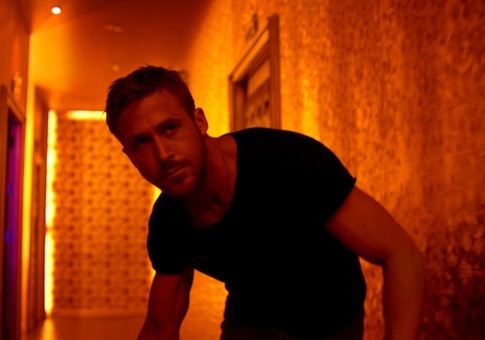The $40 million budget movie is dead. It’s superheroes and $150 million tentpoles as far as the eye can see. Nothing worth seeing is greenlit.
Such are the complaints Lynda Obst summarized—and shared—in her recent book Sleepless in Hollywood: Tales from the New Abnormal in the Movie Business.
"How did it become easier for someone who knows no one to make a movie for $150,000 than for someone who knows everyone to make one for $20 million?" complained the producer—who, it should be noted, "knows everyone."
"Or for a guy who last made a movie for $100,000 to make his next movie a superhero tentpole for $100 million? Nothing makes any sense."
Obst is best known for producing films like How to Lose a Guy in 10 Days, the remarkably unremarkable Hudson-McConaughey 2003 romcom. Allow me to suggest that it’s disingenuous to act as though we’ve lost something remarkable now that Kate Hudson vehicles are having a hard time getting off the ground. Maybe the decline of the $40M budget movie is a good thing. Maybe we are living in a golden age of small budget cinema.
Take, for example, Only God Forgives, the latest from Nicolas Winding Refn and Ryan Gosling, the director and star, respectively, of Drive. It is a bizarre little film. Set in Thailand, it focuses on the travails of a family of drug dealers: a pedophile rapist murdered by an aggrieved father; his Muay Thai club-owning brother (Gosling), who must determine who committed the crime and how best to exact revenge; and his mother, the clan’s skeevy, incestuous matriarch. A murderous, unstoppable cop with a fondness for karaoke pursues them.
Kubrickian in its framing, odd sense of humor, and reliance on bright, primary colors, Only God Forgives is reminiscent of The Shining. Gosling’s character experiences psychic flashes of retribution, slowly losing his grip on reality as the film progresses. He is Danny and Jack Torrance all in one.
His mother, meanwhile, is the Overlook made flesh. She is Lloyd the Bartender and the Woman in the Bathtub combined and pushes Gosling over the edge. The soundtracks to the two movies are similar in so far as they are both deep and brassy and wailing. This is more a horror film than a martial arts extravaganza.
It is also brutally, uncomfortably violent. Torture, disembowelment, and deformations are the hallmarks of Only God Forgives. It is not for the weak of stomach.
As a result, it’s the sort of film that was never going to reach a wide audience. Whereas Drive was a tone poem that could be gussied up and commercialized a bit, Only God Forgives was destined for obscurity. It would have a few art house showings perhaps, but it was nevertheless a Netflix-bound afterthought inaccessible to the masses.
Instead of being lost to the sands of time, however, audiences all over America can watch it whenever they want for less than the price of a single movie ticket. Available on Video on Demand (VOD)—pay per view, Amazon, DirecTV, etc.—has put this hallmark bit of "interesting cinema" within reach of anyone curious enough to check it out.
Is Only God Forgives great cinema? I don’t think so: It’s either terrifically terrible or terribly terrific. I’m leaning toward the former (as are most critics, apparently). But it’s interesting and different, bold and unsafe. I’d rather have ten of these at $5 million a crack than one $50 million generic romantic comedy or 18 generic action comedies like 2 Guns, which debuts this week.
Thanks to advances in filmmaking—cheap cameras, digital film and editing, and new modes of distribution—we are swimming in a sea of interesting flicks like Only God Forgives. The $5 million Spring Breakers turned heads and received a limited run in theaters. The $8 million Bling Ring also impressed. Chan-wook Park was also able to put his $12 million gothic, Hitchcockian thriller Stoker in front of eyeballs.
None of these films are what you would call breakout hits. Some are better than others: The Bling Ring will likely make my ten-best list and Spring Breakers has an outside shot, but not so much for Stoker and Only God Forgives.
Most of these films did little business. But they are getting made. And the people who want to see them—the people who are interested in stepping outside of their comfort zones and willing to eschew an evening at the multiplex—are seeing them. And surely that’s nothing to laugh at.
The small-budget feature is, of course, not new. Studios have for decades used festivals like Sundance as both a showcase and a shopping mall for smaller films, snapping up distribution rights, building buzz, and hoping to turn cheap flicks like Little Miss Sunshine into big hits. The last decade saw the rise of the super-cheap "mumblecore" genre. But the growing popularity of Netflix streaming and VOD has helped bring modestly budgeted, quirky, original features like Beasts of the Southern Wild and Jeff Who Lives at Home and Safety Not Guaranteed and Bernie into households everywhere.
While it’s understandable that producers like Obst are scared or, as Obst has herself done, are moving to television, the mid-tier film may simply be economically unviable. The stigma of VOD is fading.
"Films were never communal just because people wanted a communal experience," Paul Schrader (Taxi Driver writer and director of the micro-budgeted, VOD-released The Canyons) recently told Zachary Wigon. "It doesn't have to be that way anymore. You know, this myth that people will always want to go out to the movies, they'll always want a communal experience—I don't know that that's necessarily true."
Instead of mourning what is lost, celebrate what is gained. The mid-budget film may be dying. But the low budget film is alive and thriving.
